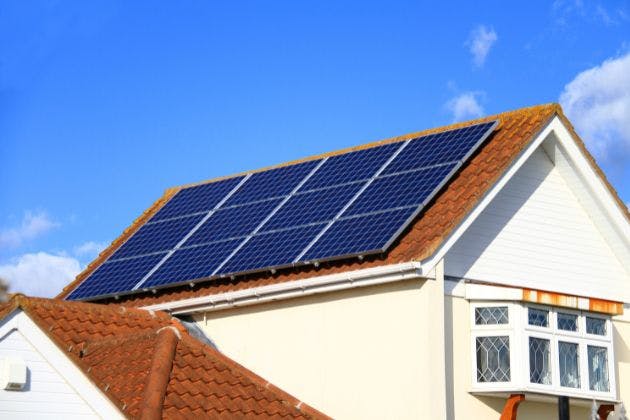When it comes to switching to solar energy, one of the first things people ask is what type of solar panels will best suit their property. Solar PV technology has advanced rapidly in recent years, giving households and businesses more choice than ever before. Understanding the main types available can help you make a confident decision that matches your budget, energy needs, and roof design.

Main Types of Solar PV Panels
Monocrystalline Solar Panels
These panels are crafted from a single crystal structure, giving them their uniform black finish. They are the most efficient option, capable of producing higher outputs even in smaller roof spaces. For properties in Norfolk and Norwich with limited roof size or where aesthetics are important, monocrystalline panels are often the top choice.
Polycrystalline Solar Panels
Made from multiple silicon fragments, polycrystalline panels have a distinct blue shade. They tend to be more cost-effective than monocrystalline panels, though slightly less efficient. If your property has ample roof space, they can still provide excellent long-term energy savings.
Thin-Film Solar Panels
Thin-film panels are lightweight and flexible, which makes them suitable for roofs or surfaces that can’t handle heavy loads. While their efficiency is lower compared to crystalline panels, they perform consistently well in shaded or warmer conditions.
Bifacial Solar Panels
Bifacial technology allows panels to generate power from both the front and rear surfaces by capturing reflected sunlight. This can boost energy output, particularly when installed on reflective surfaces or open ground.
Hybrid Solar Panels
Hybrid panels go a step further by combining PV electricity generation with solar thermal technology, meaning they can also provide hot water. This makes them ideal for households in Norfolk and Norwich wanting to maximise renewable energy use across different parts of their home.
Key Considerations Before Choosing
Roof orientation, space, and shading
The angle and direction of your roof directly impact how much sunlight your panels capture. South-facing roofs generally offer the highest output in the UK, but east and west orientations can still deliver excellent results. It’s also essential to consider whether nearby trees, chimneys, or neighbouring buildings might cast shade, as this can reduce efficiency unless managed with the right system design.
Your household or business energy demands
Think about how much electricity you use daily and at what times of the day. A family with higher energy needs, or a business running equipment throughout the day, may benefit from higher efficiency panels or a larger array. Tailoring the system to your lifestyle ensures you get the most value from your investment.
Budget and long-term savings
While some panels, like monocrystalline, have higher upfront costs, they can deliver better efficiency and quicker returns through reduced bills. Polycrystalline panels may be more affordable at the start, but they might require more roof space. Balancing your budget with the long-term savings each option offers is key to finding the right solution.
Future integration with battery storage or EV charging
Solar technology is becoming more connected with modern living. If you’re considering an electric vehicle or want to store energy for use in the evenings, battery-ready systems or hybrid options are worth exploring. Planning for these future upgrades at the installation stage can save time and money later on.
Expert Solar PV Panel Installers in Norfolk and Norwich
At Norfolk Renewable Heating, we provide tailored advice and installation services to suit your property. Our experienced solar PV installers in Norfolk and Norwich are here to help. Call us today on 07824393403 or 07939979217, or use our online contact form to schedule a consultation.

